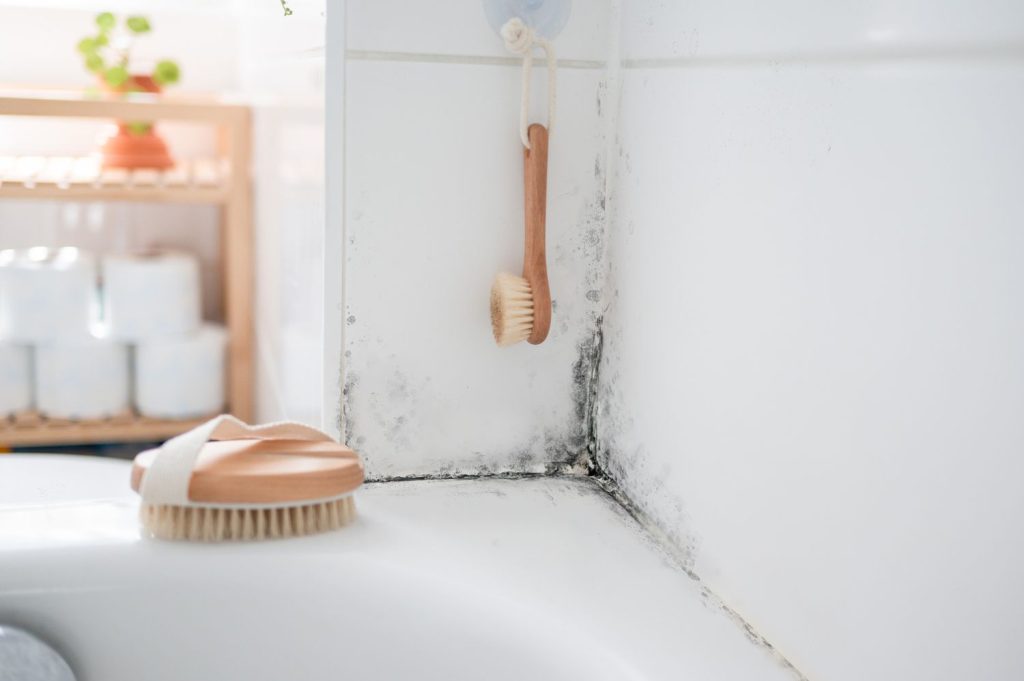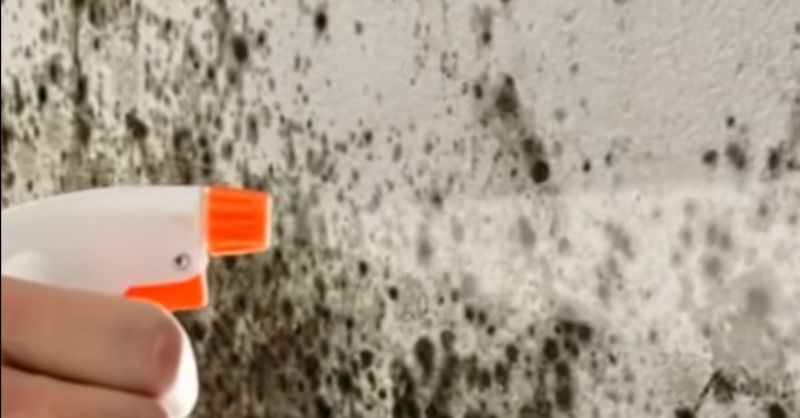Homemade Mold Cleaner: Vinegar and Alcohol

If you’re looking for a less harsh, non-bleaching solution, try this natural recipe:
- Mix warm water with 1 cup of white vinegar and 1 cup of alcohol.
- Apply to moldy areas using a sponge or cloth.
- Let it sit briefly, then wipe clean.
This method is effective on painted surfaces and won’t discolor your walls. It’s ideal for routine maintenance or light mold buildup.
Fixing the Source: The Only Permanent Solution

While surface treatments can manage visible mold or moisture, the real solution lies in addressing the root cause—often a structural issue.
Here’s what a professional might recommend:
- Remove damaged plaster and reapply it using a waterproofing solution mixed into the new plaster.
- In severe cases, break and rebuild the lower section of the affected wall, usually the first meter from the floor.
- Apply a waterproof membrane or barrier (sometimes called a waterproofing “carpet”) to prevent moisture from rising again.
Once the lower portion is sealed, the rest of the wall typically remains dry.
Natural Moisture Absorbers You Can Try
You can also support moisture control with simple, natural methods:
- Sea Salt: Place bowls of coarse sea salt on shelves or near damp walls. It slowly absorbs excess moisture in the air.
- Baking Soda: Works similarly to salt. Place open containers near the affected areas and replace them regularly.
- Tea Tree Oil: Mix 2 tablespoons of tea tree oil with 2 cups of water. Spray or apply this to moldy spots—it’s a natural antifungal agent with a pleasant scent.
These methods are not substitutes for structural fixes, but they can help reduce humidity in enclosed spaces like closets, basements, or bathrooms.
Homemade Mold Cleaner: Vinegar and Alcohol

If you’re looking for a less harsh, non-bleaching solution, try this natural recipe:
- Mix warm water with 1 cup of white vinegar and 1 cup of alcohol.
- Apply to moldy areas using a sponge or cloth.
- Let it sit briefly, then wipe clean.
This method is effective on painted surfaces and won’t discolor your walls. It’s ideal for routine maintenance or light mold buildup.
Fixing the Source: The Only Permanent Solution

While surface treatments can manage visible mold or moisture, the real solution lies in addressing the root cause—often a structural issue.
Here’s what a professional might recommend:
- Remove damaged plaster and reapply it using a waterproofing solution mixed into the new plaster.
- In severe cases, break and rebuild the lower section of the affected wall, usually the first meter from the floor.
- Apply a waterproof membrane or barrier (sometimes called a waterproofing “carpet”) to prevent moisture from rising again.
Once the lower portion is sealed, the rest of the wall typically remains dry.
Natural Moisture Absorbers You Can Try
You can also support moisture control with simple, natural methods:
- Sea Salt: Place bowls of coarse sea salt on shelves or near damp walls. It slowly absorbs excess moisture in the air.
- Baking Soda: Works similarly to salt. Place open containers near the affected areas and replace them regularly.
- Tea Tree Oil: Mix 2 tablespoons of tea tree oil with 2 cups of water. Spray or apply this to moldy spots—it’s a natural antifungal agent with a pleasant scent.
These methods are not substitutes for structural fixes, but they can help reduce humidity in enclosed spaces like closets, basements, or bathrooms.

